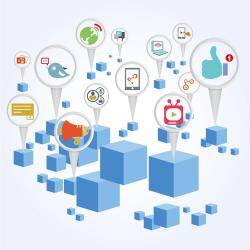Hadoop is an excellent tool for collecting and sorting massive volumes of data, but businesses must also use analytics and visualization tools on top of Hadoop in order to reap the full benefits from big data. Here’s a quick list of apps to successfully manage and leverage the massive amounts of information generated as organizations grow.
Hadoop is an excellent tool for collecting and sorting massive volumes of data, but businesses must also use analytics and visualization tools on top of Hadoop in order to reap the full benefits from big data. Here’s a quick list of apps to successfully manage and leverage the massive amounts of information generated as organizations grow.

Roambi’s goal is to change the mobile business app landscape by improving the productivity and decision-making of the mobile workforce. The app changes the way people share, interact with and present data from the mobile perspective.
The Phoenix Suns, a professional basketball team, is one such organization who uses analytics for both on-the-court and business decisions. Although skeptical at first, the Suns have found Roambi to be both valuable and easy to use in their business decisions. Utilizing this Big Data app has boosted sales and marketing while being able to make the best decisions possible on the fly.
2. Datameer: Although it seems basic on the surface, Datameer surpasses Excel and other spreadsheet programs by allowing the user link to active data sources as well as import flat files and joining two tabs together into a third like joining tables in a database.
Datameer makes it possible to integrate all data, analyze all data and visualize data helping organizations achieve their respective goals. It is purpose-built for Hadoop enabling the raw data to move to new insights quickly using the different aspects of Hadoop like Oozie.
Big Data integration is made possible with built-in connectors to all common structured and unstructured data sources. Datameer eliminates the need for ETL and pre-defined schemas.
Analyzing big data is made simple because all information is easily integrated into Hadoop with Datameer’s data integration wizard. It’ll help organizations understand the important questions and understand the effect of every transformation made and make the proper analysis adjustments as more data is processed.
Datameer also makes it possible for infographics to be produced with the WYSIWYG Business Infographic Designer. Images can be imported and videos can be embedded while free-form text can be written to organize big data in an aesthetic way.
3. SAS Visual Analytics: SAS seeks to help organizations find answers to questions quickly and then continue to ask more questions helping companies achieve their big data goals. This application uses guided exploration, in-memory processing and advanced data visualization to make it clear. SAS seeks to be a scalable solution of any organization handling data of any size.
With mobile tethering, reports can be explored without internet connectivity. Mobile workers and executives can easily access and explore dashboards anytime regardless of location. SAS mobile apps are available for iPad and Android.
Social media analytics are made easier with Visual Analytics. It can be used to tap into the millions of tweets sent each day to track customer comments in call logs and identify the “hot topics” of the day. SAS makes it possible to pick up on the buzzwords that could lead to the next round of sales or mitigate a current branding issue.
4. Esri ArcGIS: The GIS stands for Geographic Information making it easy to create data-driven maps and visualizations. Esri ArcGIS has set to enable organizations to visualize and analyze big data in a way that reveals patterns, trends and relationships that reports don’t. Esri tech can pull disparate places, streams or even web logs.
Esri seeks to expose patterns through the use of maps which can prove beneficial to organizations regardless of industry or focus. Retailers identify the competition is and where promotions are the most effective. Even banks understand why loans are defaulting and climate change scientists can see the impact of shifting weather patterns. Esri’s analytics also perform predictive modeling using spatially enabled big data to help organizations develop strategies from if/then scenarios.
Conclusion
This is just a quick overview of some of the big data apps available. As Hadoop and big data adoption becomes more mainstream, more tools for analytics and visualization will likely surface. What big data app have you found effective?
big data options / shutterstock